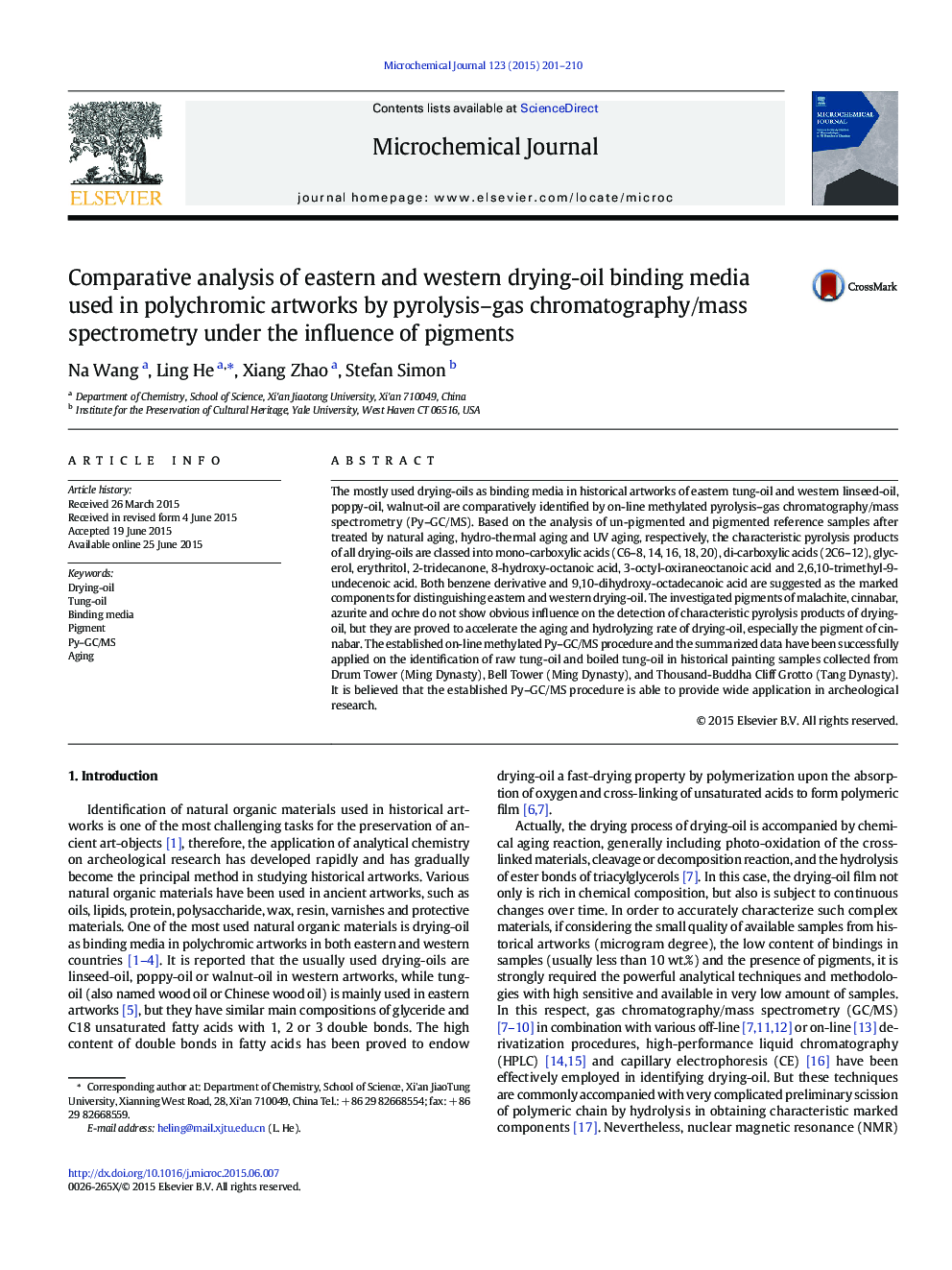| Article ID | Journal | Published Year | Pages | File Type |
|---|---|---|---|---|
| 1227659 | Microchemical Journal | 2015 | 10 Pages |
•Eastern tung-oil and western drying-oil are distinguished by on-line methylated Py–GC/MS.•Mono/di-carboxylic acids and other hydrolyzed products are identified in all drying-oils.•Benzene derivative and 9,10-dihydroxy-octadecanoic acid are used to distinguish drying-oil.•Cinnabar could significantly accelerate the aging and hydrolyzing rate of drying-oil.•The established procedure is successfully applied on the identifying real painting samples.
The mostly used drying-oils as binding media in historical artworks of eastern tung-oil and western linseed-oil, poppy-oil, walnut-oil are comparatively identified by on-line methylated pyrolysis–gas chromatography/mass spectrometry (Py–GC/MS). Based on the analysis of un-pigmented and pigmented reference samples after treated by natural aging, hydro-thermal aging and UV aging, respectively, the characteristic pyrolysis products of all drying-oils are classed into mono-carboxylic acids (C6–8, 14, 16, 18, 20), di-carboxylic acids (2C6–12), glycerol, erythritol, 2-tridecanone, 8-hydroxy-octanoic acid, 3-octyl-oxiraneoctanoic acid and 2,6,10-trimethyl-9-undecenoic acid. Both benzene derivative and 9,10-dihydroxy-octadecanoic acid are suggested as the marked components for distinguishing eastern and western drying-oil. The investigated pigments of malachite, cinnabar, azurite and ochre do not show obvious influence on the detection of characteristic pyrolysis products of drying-oil, but they are proved to accelerate the aging and hydrolyzing rate of drying-oil, especially the pigment of cinnabar. The established on-line methylated Py–GC/MS procedure and the summarized data have been successfully applied on the identification of raw tung-oil and boiled tung-oil in historical painting samples collected from Drum Tower (Ming Dynasty), Bell Tower (Ming Dynasty), and Thousand-Buddha Cliff Grotto (Tang Dynasty). It is believed that the established Py–GC/MS procedure is able to provide wide application in archeological research.
